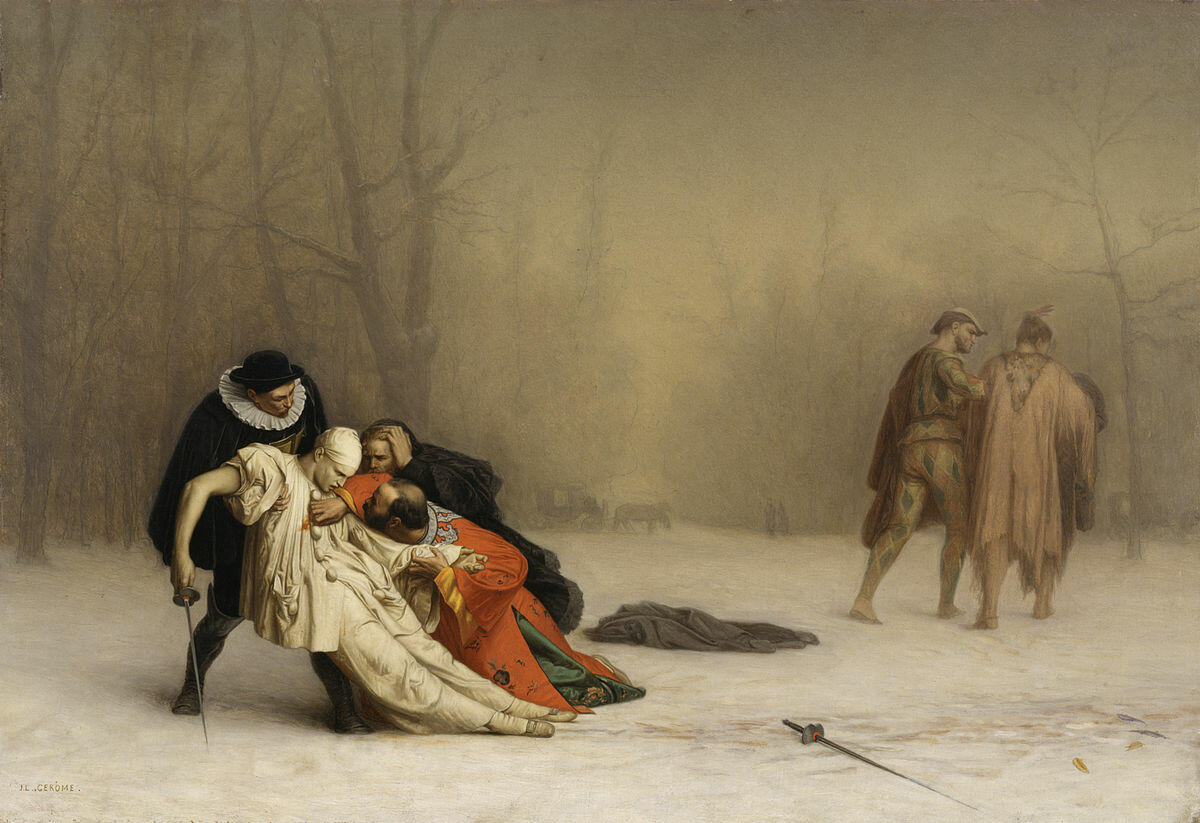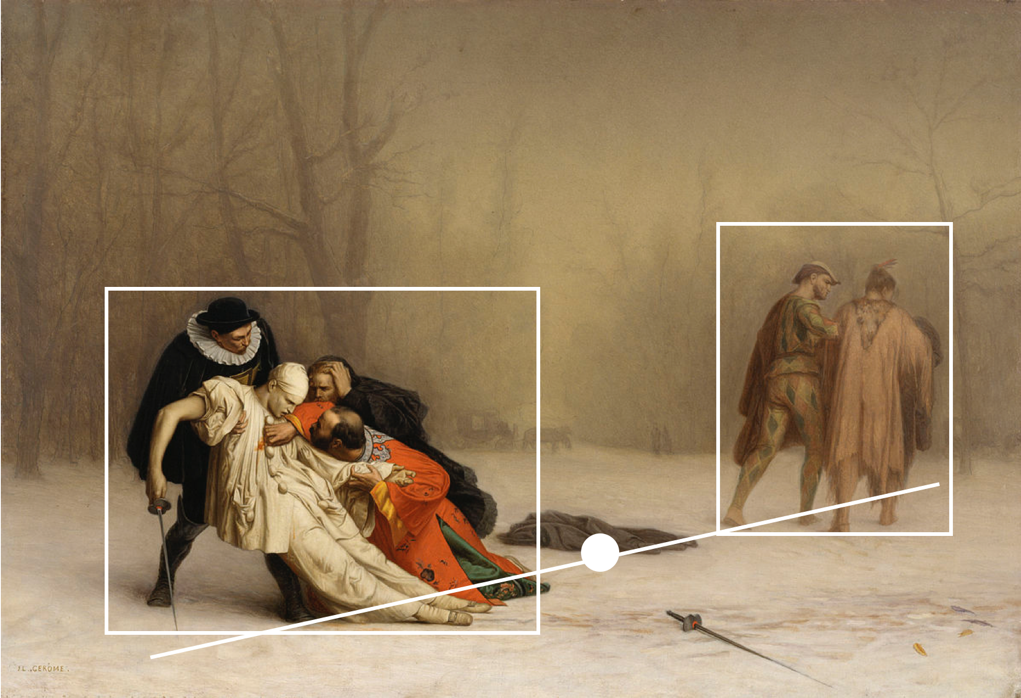Introduction
The Duel After the Masquerade (oil on canvas, twenty by twenty-eight inches) is a Jean-Léon Gérôme’s painting. It was produced in 1857 and today is located in the Musée Condé in Chantilly, France. Gérôme was a famous painter and sculptor, known for his works in the traditional style of academicism, characterized by such influences as romanticism and neoclassicism. Considered among the most important representatives of the academicism movement, Gérôme’s works included a range of references to Greek mythology, historical events, Orientalism, as well as other subjects. However, the Duel After the Masquerade (Figure 1) is far more complex and seems not fitting on the painter’s artistic intentions. Because of this, it will be compelling to analyze the painting further to reveal the artist’s ideas as well as to evaluate the value of the piece within Gérôme’s artistic legacy.

The Duel after the Masquerade: Analysis of the Painting
Color
When comparing the Duel After the Masquerade with other Gérôme’s works, it is a piece that has a color palette which is much different. In contrast to the vibrant colors, with the exception of the stark red, that the painter normally used in his works, neutral and warm tones dominate. The red color of a man’s jacket stands out strongly in the composition, leading the viewer’s gaze to the figure of another man dressed in the Pierrot the Clown costume and the small red slash on his body. It is evident that Gérôme’ intention behind the use of this particular color palette – the eye is immediately drawn to the drama occurring on the left side of the painting, disregarding the two figures of men walking away from the scene. The group of men to the left is the center of interest in the painting because they have the best light and the brightest colors that complement each other. Importantly, the two men wearing black frame the center of attention by adding to the contrast and giving the figures in white and red sharp edges. The two men walking away are painted in very neutral colors as if disappearing from the picture, which also draws more attention to the other group of men.
Composition
The composition of Gérôme’s piece also deserves attention. It can be classified as steelyard composition, in which a particular distribution of forms based on size is used. Usually, there is a larger and a smaller sized element placed in two opposite directions from the center. Also, there is a point of balance between the two elements. The composition of the painting is reminiscent of a ‘seesaw’ to achieve balance, as illustrated below:

As seen from the schematic interpretation of the painting’s composition, in the Duel After the Masquerade, the larger element is represented by the group of men on the left while the smaller one is the two men to the right. The point of balance is the piece of cloth (someone’s cape or jacket) placed in the center of the composition. The ‘seesaw’ is balanced through the heavier (larger) element being closer to the point of balance and the lighter (smaller) being closer to the frame.
Conclusion
To conclude, the Duel After the Masquerade is a unique painting that does not fit in the usual style of Jean-Léon Gérôme. The smart use of colors in the painting adds to the emotional context of the scene as well as it compositional value. The painter intentionally emphasized the focal point of the scene to underline the drama and tragedy through preserving the traditional approaches to compositional balance.
Reference
The Duel After the Masquerade [Image] (n.d.). Web.
